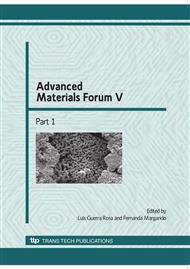p.651
p.657
p.665
p.671
p.676
p.682
p.688
p.697
p.703
Effect of Surface Modification of Multiwall Carbon Nanotubes on their Electrical and Surface Properties
Abstract:
The surface of multiwall carbon nanotubes (CNT) was modified by non-covalent approach. Various types of surfactants, an anionic surfactant - dodecylbenzenesulfonic acid, an cationic surfactant - cetyltrimethylammonium bromide and their combination with different molar ratios were used for modification. Different power of ultrasound, 64 or 400 W was used to evaluate its influence on the properties of prepared composites. The electrical conductivities of unmodified CNT, particles treated by ultrasound, and CNT modified with surfactants were measured. The surface properties of modified particles were determined by X-ray photoelectron spectroscopy and scanning electron microscopy. Thermogravimetric analysis was used to confirm the presence and to evaluate the quantity of surfactants in the modified CNT.
Info:
Periodical:
Pages:
676-681
Citation:
Online since:
January 2010
Authors:
Price:
Сopyright:
© 2010 Trans Tech Publications Ltd. All Rights Reserved
Share:
Citation:


